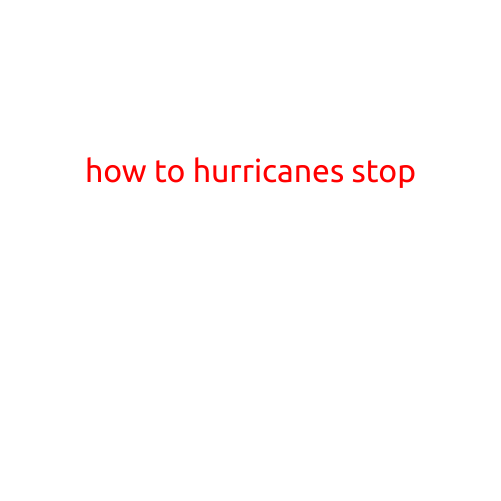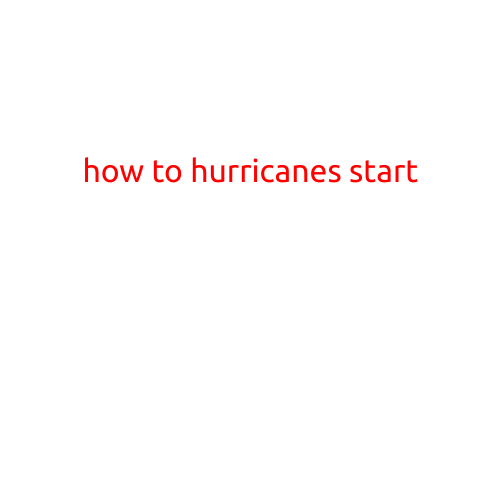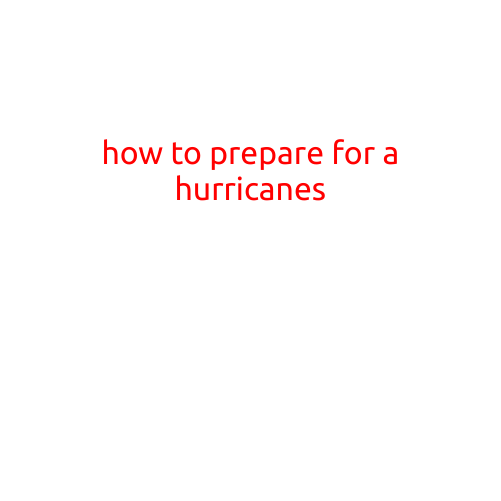
How to “Stop” Hurricanes: Understanding and Mitigating the Impact of These Powerful Storms
Hurricanes are powerful and destructive storm systems that can cause catastrophic damage to communities, infrastructure, and the environment. These powerful storms are fueled by the warm waters of the Atlantic Ocean and can bring winds of up to 150 miles per hour, causing widespread flooding, power outages, and structural damage.
While it is not possible to “stop” hurricanes entirely, there are steps that can be taken to mitigate their impact and reduce the risk of damage. In this article, we will explore the science behind hurricanes and discuss practical methods for preparing for, responding to, and recovering from these powerful storms.
Understanding Hurricanes
Hurricanes are low-pressure systems that form over warm ocean waters when the sea surface temperature is at least 80°F (27°C). They are fueled by the warmth and moisture of these waters, which allows them to develop and intensify. Hurricanes are classified based on their wind speed, with categories ranging from 1 (winds of 74-95 mph) to 5 (winds of 157 mph or higher).
Preparing for Hurricanes
Preparation is key to minimizing the impact of hurricanes. Here are some steps you can take to prepare for a hurricane:
- Create a hurricane emergency kit: Stock up on non-perishable food, water, and medical supplies in case you are unable to leave your home.
- Secure your home: Board up windows and doors, and secure outdoor furniture and decorations to prevent damage.
- Charge your devices: Charge your cell phone, laptop, and any other important devices in case the power goes out.
- Stay informed: Keep a radio and flashlight handy, and sign up for emergency alerts from your local authorities.
Responding to Hurricanes
During a hurricane, it is essential to follow evacuation orders and seek shelter in a safe location. Here are some steps you can take to respond to a hurricane:
- Evacuate if ordered: If you are ordered to evacuate, do so immediately to minimize the risk of injury or property damage.
- Stay away from windows: If you are in a building, stay away from windows and doors, and seek shelter in an interior room or hallway.
- Avoid flooded areas: Avoid flooded areas and do not attempt to drive or wade through floodwaters, as they can be contaminated with sewage and other pollutants.
Recovering from Hurricanes
After a hurricane has passed, it is essential to prioritize your health and safety, as well as the recovery of your community. Here are some steps you can take to recover from a hurricane:
- Check for damage: Assess damage to your home and property, and report any major issues to your local authorities.
- Follow safe drinking water and food guidelines: Ration your food and water supplies, and use only bottled or boiled water for drinking and cooking.
- Get medical attention if needed: If you have been injured or are experiencing medical issues, seek attention from a healthcare professional as soon as possible.
Conclusion
While it is not possible to “stop” hurricanes entirely, by understanding the science behind these powerful storms and taking steps to prepare, respond, and recover from them, we can minimize their impact and reduce the risk of damage to our communities and the environment. Whether you live in a hurricane-prone area or are just visiting, it is essential to be prepared and take steps to mitigate the risk of harm.





